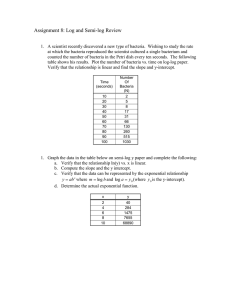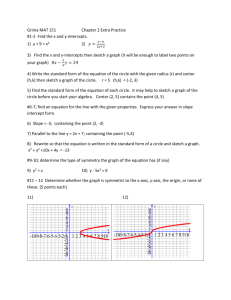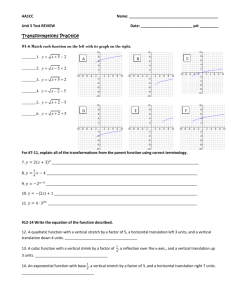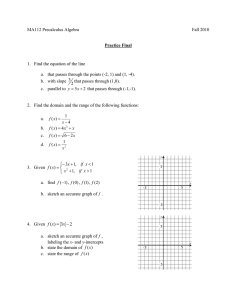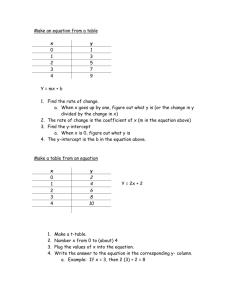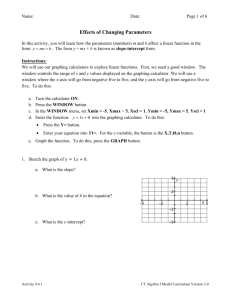Section 9.2 Linear or Exponential
advertisement
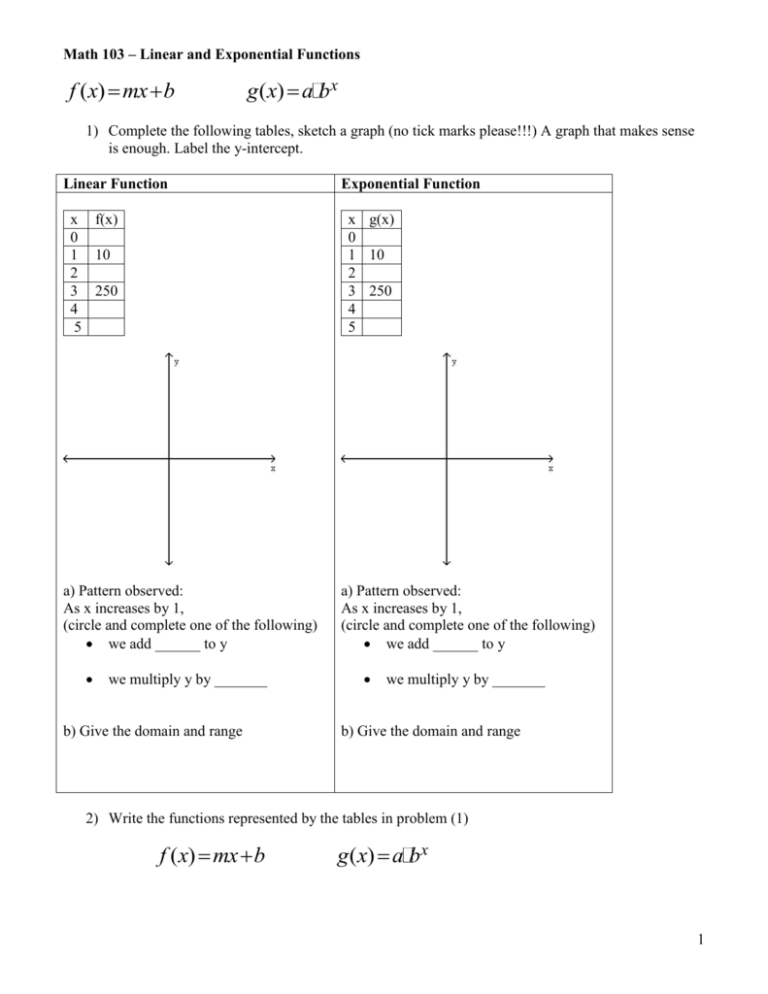
Math 103 – Linear and Exponential Functions f (x) mx b g ( x) a bx 1) Complete the following tables, sketch a graph (no tick marks please!!!) A graph that makes sense is enough. Label the y-intercept. Linear Function x f(x) 0 1 10 2 3 250 4 5 x g(x) 0 1 10 2 3 250 4 5 a) Pattern observed: As x increases by 1, (circle and complete one of the following) we add ______ to y Exponential Function we multiply y by _______ b) Give the domain and range a) Pattern observed: As x increases by 1, (circle and complete one of the following) we add ______ to y we multiply y by _______ b) Give the domain and range 2) Write the functions represented by the tables in problem (1) f (x) mx b g ( x) a bx 1 3) Complete the following tables, sketch a graph (no tick marks please!!!) A graph that makes sense is enough. Label the y-intercept. Linear Function x f(x) 0 1 10,000 2 3 4 10 5 x g(x) 0 1 10,000 2 3 4 10 5 a) Pattern observed: As x increases by 1, (circle and complete one of the following) we add ______ to y Exponential Function we multiply y by _______ b) Give the domain and range a) Pattern observed: As x increases by 1, (circle and complete one of the following) we add ______ to y we multiply y by _______ b) Give the domain and range 4) Write the functions represented by the tables in problem (3) f (x) mx b g ( x) a bx 2 5) DO NOT USE THE CALCULATOR TO GRAPH - For each of the following functions, a. Show the algebra to find the y-intercept. b. Label the y-intercept in the graph. c. Specify whether the function is increasing or decreasing. d. Explain what number in the function helps you decide whether the function is increasing or decreasing e. Sketch a graph. (No tick-marks; a graph that makes sense is enough). (i) f (x) 12 (5)x (ii) f ( x) 12 5x (i) f (x) 8 (4/5)x (ii) f ( x) 0.3 (5/ 4)x (i) f (x) 2.5 (0.23)x (ii) f ( x) 3 (5/ 4) x 3 6) For each graph, make up a value for the y-intercept, then, write a function of the form g ( x) a bx or f (x) mx b to match the graph. a) b) c) d) 7) Write a function that gives the number of bacteria, y, as a function of the time elapsed x (in days). Then, enter both functions in the calculator, and explore both tables. a. The number of bacteria in a dish is 250. Every day the number of bacteria doubles. b. The number of bacteria in a dish is 250. Every day we have 5 more bacteria than on the preceding day. 8) Write a function that gives the value of the car, y, as a function of the years after we bought it, x. Then, enter both functions in the calculator, and explore both tables. a. The value of a certain new car is $18,000. Every year the value of the car is 8/9 of the value at the preceding year. b. The value of a certain new car is $18,000. Every year the value decreases by $2000. 4
